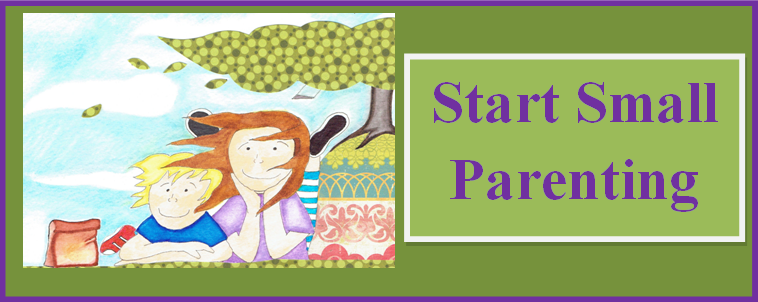
I was asked about time-outs today by a mom in my music class. Then I came home to this post on The Stir called “Time-Outs for Toddlers: Are You Doing It Wrong?” So, it’s a perfect topic for today.
The best part about the time-out concept is that it Stops The Child’s World. It works as a pattern interrupt, can calm emotions, and helps the child have space for a learning moment. The linked article has some very specific, helpful ideas. I really like how the author, Adriana Velez, writes about being calm and consistent, keeping it short, and having a follow-up with the child.
In the article, Velez writes that the location should have no distractions. She mentioned that some children don’t like to be alone and may see separation as a form of punishment. I don’t recommend separating the child completely away from other family members. What worked for us was having a designated chair where Zed sat when he needed that down time. We called it The Learning Chair. We kept it in a spot on the far side of the kitchen where he could see the kitchen and the dining room, but it was relatively low on distractions.
We asked him to think about what just happened while he sat there. I have a kinesthetic learner for a kid. Sitting still for him was tough. But it also helped him learn some self-control, especially important for those on-the-move kids.
Here’s one scenario from my memory files when Zed was two:
Zed draws with a crayon on the wall. I could decide to take the crayons away. But instead, I see it as an opportunity for a learning moment.
Me: Zed, don’t draw on the wall. It’s not respectful to draw on our walls. Here’s a piece of paper.
Zed, after a few minutes of drawing on the paper, draws on the wall.
I lead Zed over to the Learning Chair, repeating how we don’t draw on walls.
Me: Sit here for a minute. I want you to think about what I said.
Zed gets up.
I lead Zed back to the chair.
Me: I’ll be right here cutting vegetables. I want you to sit there and think about how we don’t draw on the walls.
After 30 seconds, I get down on his level where he’s sitting.
Me: What did you think about?
Zed: I want to draw on the walls.
Me: I know. It looks like a big giant place to draw. Do you agree, we don’t draw on walls?
Zed nods.
Me: How about I put up a big piece of paper on the wall and you can draw on it.
He agrees. I give him a big hug. Then I get out the butcher paper (a roll of butcher paper is GREAT to always have on hand). I make sure it covers all the wall space so he doesn’t go off the paper. He draws the entire time I make dinner. What a win!
The first time you try the Learning Chair, pick an opportunity where emotions are not heated. That will make it easier for you to stay calm.
If you already do time-outs, let me know how they work. I love to get glimpses into your family.


Hi Annie. I’m really enjoying your blog, thanks so much for your thoughtful posts. Regarding timeouts, we never used them with our three kids. However, I used them often with myself. I found that when I got really frustrated with a behavior I would say calmly to the kids, “mommy is going to take a timeout to think about how I can better communicate with you.” I would then leave the room, leave their sight, leave the mess. I would never be gone longer than 5 minutes, it gave me time to collect myself and it gave them time to think about why mommy left the room. When I came back I could calmly discuss the situation with them and more importantly they seemed to always have ways we could communicate more effectively. Now that my girls are almost 14, they often use the line “I’m going to leave the room to collect my thoughts so we can better communicate.” It’s interesting to see how the table has turned.
That is absolutely great advice! I think the biggest theme always comes back to respect. What better way to model it for our kids than when we are calm. (My friend always went into her “special room” – the bathroom – lol!) And it sounds like it worked out great for you and your girls. Thanks for sharing.
I received this wonderful comment on the Parenting Groove Facebook page and wanted to pass it on. This great advice comes from Melanie DeWitt, parent of four:
I’m a fan of the “time-in.” It’s basically the same as a time-out but you do it with them and use it as a time to reconnect and get to the real cause of the undesirable behavior. So instead of saying, “go take a time-out” I will sit with them and try to help them express and name their feelings and find solutions to their problems. Most of the time they ask for a break first and this is always ok as long as we have our time-in when they are done with their break.
Hi Annie,
I love everything about your blog post! Thank you for the wonderful information and extra articles.
I do think that time out works well for very young children. However, as one of the articles suggests, there is a danger of overdoing it. I like the gentle and respectful way you talk about setting this up at your own home. I love the idea of “time in” as well. The older the children get, I feel that positive reinforcement is a great strategy to use. In this case you would direct your child by noticing their good behavior and reinforcing it.
Maria
http://www.musicteachingandparenting.com/2012/10/changing-behavior-habits-with-students.html